Burkina Faso, a landlocked West African nation, shares borders with Mali, Niger, Benin, Togo, Ghana, and Ivory Coast. Encompassing 274,223 km2, its estimated 2024 population is approximately 23,286,000. Formerly known as the Republic of Upper Volta, it was renamed by President Thomas Sankara. Its citizens are called Burkinabè, and its capital and largest city is Ouagadougou.
1915: Volta-Bani War
Between 1915 and 1916, the districts in the western part of what is now Burkina Faso and the bordering eastern fringe of Mali became the stage of the Volta-Bani War.
1916: Volta-Bani War
Between 1915 and 1916, the districts in the western part of what is now Burkina Faso and the bordering eastern fringe of Mali became the stage of the Volta-Bani War.
March 1919: French Upper Volta established
On 1 March 1919, French Upper Volta was established.
1934: Publication of Maximes, pensées et devinettes mossi
In 1934, during French occupation, Dim-Dolobsom Ouedraogo published his "Maximes, pensées et devinettes mossi (Maxims, Thoughts and Riddles of the Mossi)", a record of the oral history of the Mossi people.
1944: Establishment of the World Bank
The World Bank was established in 1944, with the goal of ending extreme poverty by 2030 and promoting shared prosperity.
September 1947: Colony of Upper Volta revived
On 4 September 1947, France revived the colony of Upper Volta, with its previous boundaries, as a part of the French Union.
July 1956: Passage of the Basic Law
A revision in the organization of French Overseas Territories had begun with the passage of the Basic Law (Loi Cadre) on 23 July 1956.
1957: Reorganization measures approved
Early in 1957, reorganization measures approved by the French parliament ensured a large degree of self-government for individual territories.
December 1958: Self-government as the Republic of Upper Volta
On 11 December 1958 the colony achieved self-government as the Republic of Upper Volta; it joined the Franco-African Community.
December 1958: Republic of Upper Volta established
On 11 December 1958, the Republic of Upper Volta was established as a self-governing colony within the French Community.
1958: Republic of Upper Volta
In 1958, The Republic of Upper Volta was established
1958: Upper Volta becomes a self-governing colony
In 1958, Upper Volta became a self-governing colony within the French Community.
August 1960: Full independence from France
On 5 August 1960, Upper Volta attained full independence from France.
1960: Gained full independence
In 1960, Upper Volta gained full independence with Maurice Yaméogo as president.
1966: Military Coup
In 1966, a military coup deposed Yaméogo, suspended the constitution, dissolved the National Assembly, and placed Lt. Col. Sangoulé Lamizana at the head of a government of senior army officers.
1969: Establishment of FESPACO
In 1969, Burkina Faso's contribution to African cinema started with the establishment of the film festival FESPACO (Festival Panafricain du Cinéma et de la Télévision de Ouagadougou), which was launched as a film week.
1973: Archaeological excavations discovery
In 1973, tools of hunter-gatherers from 14,000 BCE to 5,000 BCE were discovered through archaeological excavations.
June 1976: New Constitution Ratified
On 14 June 1976, the Voltans ratified a new constitution that established a four-year transition period toward complete civilian rule.
1977: New constitution was written and approved
After conflict over the 1976 constitution, a new constitution was written and approved in 1977.
1977: Constitution eradicated
In November 1980, Colonel Zerbo established the Military Committee of Recovery for National Progress as the supreme governmental authority, thus eradicating the 1977 constitution.
1978: Lamizana was re-elected by open elections
In 1978, Lamizana was re-elected by open elections.
November 1980: Saye Zerbo overthrew President Lamizana
On 25 November 1980, Col. Saye Zerbo overthrew President Lamizana in a bloodless coup.
1980: Military Coup
In 1980, there was a military coup in Upper Volta.
1982: Zerbo overthrown by Jean-Baptiste Ouédraogo
In 1982, Colonel Zerbo was overthrown by Maj. Dr. Jean-Baptiste Ouédraogo and the Council of Popular Salvation (CSP) in the Upper Voltan coup d'état.
1982: Military Coup
In 1982, there was a military coup in Upper Volta.
January 1983: Thomas Sankara appointed prime minister
In January 1983, Capt. Thomas Sankara was appointed prime minister.
August 1983: Military coup d'état
On 4 August 1983, efforts to free Thomas Sankara, directed by Capt. Blaise Compaoré, resulted in a military coup d'état.
1983: Thomas Sankara came to power
In 1983, Thomas Sankara came to power in Burkina Faso following a successful coup and embarked on a series of ambitious socioeconomic reforms.
1983: FEPACI Rescued
In 1983, the Federation of Panafrican Filmmakers (FEPACI) was rescued from a period of inactivity by the support and funding of President Sankara.
1983: Sankara engaged in three major battles
In the 1980s, Sankara engaged in three major battles against bush fires, cattle roaming, and the illegitimate cutting of firewood. Before 1983, Cereal production was close to 1.1 billion tons.
August 1984: Country name changed
On 2 August 1984, the country's name changed from "Upper Volta" to "Burkina Faso". The presidential decree was confirmed by the National Assembly on 4 August 1984.
August 1984: Country renamed Burkina Faso
On 4 August 1984, the country was renamed "Burkina Faso" by then-President Thomas Sankara.
1984: Renamed Burkina Faso
In 1984, the Republic of Upper Volta was renamed Burkina Faso by former president Thomas Sankara.
October 1987: Assassination of Sankara and Government Officials
On 15 October 1987, Thomas Sankara, the president of Burkina Faso, and twelve other government officials were assassinated in a coup d'état organized by Blaise Compaoré. Compaoré then took over as president. Some CDRs mounted an armed resistance to the army for several days after the coup.
1987: Thomas Sankara deposed and assassinated
In 1987, Thomas Sankara was deposed and assassinated in a coup led by Blaise Compaoré.
1987: Cereal production predicted to rise
In 1987, cereal production, close to 1.1 billion tons before 1983, was predicted to rise to 1.6 billion tons in Burkina Faso.
1987: Military Coup
In 1987, there was a military coup in Burkina Faso.
1988: First International Art and Craft Fair, Ouagadougou (SIAO)
In 1988, the International Art and Craft Fair, Ouagadougou (SIAO), was held for the first time. It is held every two years and is one of Africa's most important trade shows for art and handicrafts.
1989: Alleged Coup Attempt
Following an alleged coup attempt in 1989, Compaoré introduced limited democratic reforms in 1990.
1990: Improved access to drinking water in rural areas
According to UNICEF, access to drinking water has increased from 39 to 76% in rural areas between 1990 and 2015.
1990: Forest Cover
In 1990 forest cover was 7,716,600 hectares (ha).
1990: Introduction of Democratic Reforms
In 1990, following an alleged coup attempt in 1989, Compaoré introduced limited democratic reforms.
1990: Literacy rate in Burkina Faso
The 2008 UN Development Program Report indicated that Burkina Faso had a literacy rate of 12.8% in 1990.
December 1991: Compaoré Re-elected
In December 1991, Compaoré was re-elected as president without opposition under the new (1991) constitution.
1993: Demographic and Health Surveys
Demographic and Health Surveys completed three surveys in Burkina Faso since 1993, with another in 2009.
January 1998: Death of David Ouedraogo
David Ouedraogo, a chauffeur who worked for François Compaoré, died as a result of torture in January 1998.
1998: Burkina Faso Hosts Africa Cup of Nations
In 1998, Burkina Faso hosted the Africa Cup of Nations, for which the Omnisport Stadium in Bobo-Dioulasso was built.
1998: Compaoré Wins Election in a Landslide
In 1998, Compaoré won election in a landslide victory.
1998: Assassination of Norbert Zongo
In 1998, investigative journalist Norbert Zongo, along with his brother Ernest, his driver, and another man, were assassinated by unknown assailants. An independent Commission of Inquiry later concluded that Norbert Zongo was killed for political reasons due to his investigation into the death of David Ouedraogo.
January 1999: François Compaoré charged
In January 1999, François Compaoré was charged with the murder of David Ouedraogo, who had died as a result of torture in January 1998, but the charges were later dropped.
1999: Reform of legal framework for banking activities
In 1999, the legal framework regarding licensing, bank activities, organizational and capital requirements, inspections and sanctions was significantly reformed.
August 2000: RSP members charged with murder
In August 2000, five members of the President's personal security guard detail (Régiment de la Sécurité Présidentielle, or RSP) were charged with the murder of Ouedraogo.
2000: Constitutional Amendment
In 2000, the constitution was amended to reduce the presidential term to five years and set term limits to two, preventing successive re-election.
2000: Constitutional amendment on presidential terms
In 2000, the constitution was amended to reduce the presidential term to five years and set term limits to two, preventing successive re-election.
2000: Improved water access in urban centers
Since 2000, nearly 2 million more people have access to water in the four principal urban centres in the country; the company has kept the quality of infrastructure high.
2001: Central government spending on health
In 2001, central government spending on health in Burkina Faso was 3%.
September 2002: Coup attempt in Ivory Coast affects Burkinabè workers
The September 2002 coup attempt in Ivory Coast and the ensuing fighting meant that hundreds of thousands of Burkinabè returned to Burkina Faso, suffering the regional economy.
2002: Abolishment of upper house of parliament
In 2002, the upper house of parliament (Chamber of Representatives) was abolished, resulting in a unicameral parliament.
2004: Trial for Plotting a Coup Against President Compaoré
In 2004, 13 people were tried for plotting a coup against President Compaoré, and the coup's alleged mastermind was sentenced to life imprisonment.
October 2005: Constitutional Council Ruling
In October 2005, the constitutional council ruled that the 2000 amendment reducing presidential terms would not apply to Compaoré until the end of his second term, clearing the way for his candidacy in the 2005 election.
November 2005: Compaoré Reelected
On 13 November 2005, Compaoré was reelected in a landslide due to a divided political opposition.
2005: Female Genital Mutilation
According to a 2005 World Health Organization report, approximately 72.5% of girls and women in Burkina Faso had undergone female genital mutilation, performed according to traditional rituals.
2006: Languages spoken natively in Burkina Faso
According to the 2006 census, Mooré was spoken by 40.5% of the population, Fula by 9.3%, Gourmanché by 6.1%, Bambara by 4.9%, Bissa by 3.2%, Bwamu by 2.1%, Dagara by 2%, San by 1.9%, Lobiri with 1.8%, Lyélé with 1.7%, Bobo and Sénoufo with 1.4% each, Nuni by 1.2%, Dafing by 1.1%, Tamasheq by 1%, Kassem by 0.7%, Gouin by 0.4%, Dogon, Songhai, and Gourounsi by 0.3% each, Ko, Koussassé, Sembla, and Siamou by 0.1% each, other national languages by 5%, other African languages by 0.2%, French by 1.3%, and other non-indigenous languages by 0.1%.
2006: FEPACI Secretariat Moves
In 2006, the Secretariat of the Federation of Panafrican Filmmakers (FEPACI) moved to South Africa, but the headquarters remained in Ouagadougou.
April 2007: Death threats to radio host Karim Sama
In April 2007, popular radio reggae host Karim Sama, known for his critical commentary on alleged government injustice and corruption, received several death threats.
2007: Compaoré's Government as Negotiator in Disputes
In 2007 Compaoré's government played the role of negotiator in several West-African disputes, including the Inter-Togolese Dialogue (2007).
December 2008: Protest March for Zongo Assassination
In December 2008, police in Ouagadougou questioned leaders of a protest march that called for a renewed investigation into the unsolved Zongo assassination. Jean-Claude Meda, the president of the Association of Journalists of Burkina Faso, was among the marchers.
2008: Stunted growth due to food insecurity
From 2008 to 2012, at least a third of Burkina Faso's population was affected by stunted growth as a result of food insecurity.
2008: Literacy rate in Burkina Faso
The 2008 UN Development Program Report ranked Burkina Faso as the country with the lowest level of literacy in the world, despite efforts to double its literacy rate from 12.8% in 1990 to 25.3% in 2008.
2009: Physicians per capita
As of 2009, studies estimated there were as few as 10 physicians per 100,000 people in Burkina Faso. There were also 41 nurses and 13 midwives per 100,000 people.
2009: Spending on research and development
In 2009, Burkina Faso spent 0.20% of GDP on research and development (R&D).
2009: U.S. Department of State's Trafficking in Persons Report
In 2009, the U.S. Department of State's Trafficking in Persons Report stated that slavery continued to exist in Burkina Faso, and Burkinabè children were often the victims.
2009: Poverty rate
The December 2018 report by the World Bank indicated that the poverty rate in Burkina Faso was 46% in 2009.
2010: Micronutrient deficiencies
According to the Demographic and Health Survey (DHS 2010), 49 percent of women and 88 percent of children under the age of five suffered from anemia.
2010: Compaoré's Government as Negotiator in Disputes
In 2010 Compaoré's government played the role of negotiator in several West-African disputes, including the 2010–2011 Ivorian crisis.
2010: Compaoré Re-elected
In 2010 presidential election, Compaoré was re-elected.
2010: Policy on Secondary and Higher Education and Scientific Research
In 2010, the Policy on Secondary and Higher Education and Scientific Research was established.
2010: Maternal mortality ratio
In 2010, the maternal mortality ratio in Burkina Faso was estimated at 300 deaths per 100,000 live births, and the physician density was 0.05 per 1000 population.
2010: Number of researchers per million inhabitants
In 2010, there were 48 researchers (in full-time equivalents) per million inhabitants in Burkina Faso.
January 2011: Creation of the Ministry of Scientific Research and Innovation
In January 2011, the government created the Ministry of Scientific Research and Innovation.
February 2011: Burkinabè Protests
In February 2011, the death of a schoolboy provoked the 2011 Burkinabè protests, a series of popular protests, coupled with a military mutiny and a magistrates' strike. The protests called for Compaoré's resignation, democratic reforms, higher wages for troops and public servants and economic freedom.
April 2011: Army Mutiny
In April 2011, there was an army mutiny; the president named new chiefs of staff, and a curfew was imposed in Ouagadougou.
2011: Compaoré's Government as Negotiator in Disputes
In 2011 Compaoré's government played the role of negotiator in several West-African disputes, including the 2010–2011 Ivorian crisis.
2011: Increase in gold production
In 2011, Gold production increased 32% at six gold mine sites, making Burkina Faso the fourth-largest gold producer in Africa.
2011: Health expenditures
In 2011, health expenditures in Burkina Faso were 6.5% of GDP, and the UNAIDS Report indicated that HIV prevalence was declining among pregnant women attending antenatal clinics.
2011: National Programme for the Rural Sector
In 2011, the National Programme for the Rural Sector was established.
2011: Value of exports falls
In 2011, the value of Burkina Faso's exports was $2.77 billion.
2012: Formation of the Protracted Relief and Recovery Operation
Following the food and nutrition crisis in 2012, the Protracted Relief and Recovery Operation 200509 (PRRO) was formed to respond to the high levels of malnutrition in Burkina Faso. The project focused on the treatment and prevention of malnutrition and included take home rations for the caretakers of children being treated for malnutrition.
2012: Stunted growth due to food insecurity
From 2008 to 2012, at least a third of Burkina Faso's population was affected by stunted growth as a result of food insecurity.
2012: Compaoré's Government as Negotiator in Disputes
In 2012 Compaoré's government played the role of negotiator in several West-African disputes, including the 2012 Malian Crisis.
2012: Adoption of National Policy for Scientific and Technical Research
In 2012, Burkina Faso adopted a National Policy for Scientific and Technical Research to develop R&D and the application and commercialization of research results.
2012: Adult HIV prevalence rate
In 2012, the adult HIV prevalence rate (ages 15–49) in Burkina Faso was estimated to be 1.0%.
2012: Preparation of National Strategy to Popularize Technologies, Inventions and Innovations
In 2012, the government prepared a National Strategy to Popularize Technologies, Inventions and Innovations.
2012: Value of exports plummets
In 2012, the value of Burkina Faso's exports fell to $754 million.
2013: Global Hunger Index ranking
According to the Global Hunger Index, Burkina Faso ranked 65 out of 78 countries in 2013.
2013: Passage of Science, Technology and Innovation Act
In 2013, Burkina Faso passed the Science, Technology and Innovation Act, establishing three mechanisms for financing research and innovation.
2013: Burkina Faso Reaches Africa Cup of Nations Final
In 2013, Burkina Faso qualified for the African Cup of Nations in South Africa and reached the final, but lost to Nigeria 0–1.
2013: Researchers per million population in sub-Saharan Africa
In 2013, the average researchers per million population in sub-Saharan Africa was 20.
2013: Men's National Basketball Team Qualifies for AfroBasket
In 2013, the country's men's national basketball team had its most successful year when it qualified for the AfroBasket, the continent's prime basketball event.
2013: Record gold production over 2013
In 2018, Burkina Faso's expected gold production would be two-thirds increase over 2013.
October 2014: Removal of Blaise Compaoré
Blaise Compaoré ruled the country until his removal on 31 October 2014.
October 2014: Compaoré's Presidency Ends
In October 2014, Blaise Compaoré's long-standing presidency came to an end. He had held the position since the coup in 1987.
October 2014: Protests Against Compaoré
Starting on 28 October 2014, protesters began to march and demonstrate in Ouagadougou against President Compaoré. On 30 October some protesters set fire to the parliament building and took over the national TV headquarters. Ouagadougou International Airport closed and MPs suspended the vote on changing the constitution. Later in the day, the military dissolved all government institutions and imposed a curfew.
November 2014: Transitional Authority Plan Adopted
In November 2014, opposition parties, civil-society groups and religious leaders adopted a plan for a transitional authority to guide Burkina Faso to elections. Under the plan Michel Kafando became the transitional president and Lt. Col. Zida became the acting Prime Minister and Defense Minister.
2014: Burkina Faso Remains Least-Developed
As of 2014, Burkina Faso remained one of the least-developed countries in the world.
2014: Burkina Faso becomes a member of G5 Sahel
In 2014, Burkina Faso becomes a member of G5 Sahel, a small group formed to co-operate with development and security matters.
2014: Creation of a centre of excellence at the International Institute of Water and Environmental Engineering
In 2014, a centre of excellence was created at the International Institute of Water and Environmental Engineering in Ouagadougou within the World Bank project.
2014: Preparation of National Innovation Strategy
In 2014, the government prepared a National Innovation Strategy.
2014: Median age and population growth rate
In 2014, the median age of Burkina Faso's inhabitants was 17 years, and the estimated population growth rate was 3.05%.
2014: Total fertility rate
In 2014, the total fertility rate of Burkina Faso was estimated to be 5.93 children born per woman, which was the sixth highest fertility rate in the world.
August 2015: Jihadist Insurgency Begins
In August 2015, a Jihadist insurgency began as part of the Islamist insurgency in the Sahel.
September 2015: Presidential Security Coup d'état
On 16 September 2015, the Regiment of Presidential Security (RSP) carried out a coup d'état, seizing the president and prime minister and then declaring the National Council for Democracy the new national government. However, on 22 September 2015, the coup leader, Gilbert Diendéré, apologized and promised to restore civilian government. On 23 September 2015 the prime minister and interim president were restored to power.
November 2015: General Elections
On 29 November 2015, general elections took place. Roch Marc Christian Kaboré won the election in the first round with 53.5% of the vote, defeating businessman Zéphirin Diabré, who took 29.7%.
December 2015: Kaboré Sworn in as President
On 29 December 2015, Kaboré was sworn in as president.
2015: Improved access to drinking water in urban areas
According to UNICEF, access to drinking water increased from 75 to 97% in urban areas in this same time span from 1990.
2015: Forest Area Under Public Ownership
For the year 2015, 100% of the forest area was reported to be under public ownership.
2015: Gold production in 2015
In 2015, Burkina Faso's gold production was 36 metric tonnes.
2015: Kaboré promised to revise the 1991 constitution
In 2015, Kaboré promised to revise the 1991 constitution.
2015: Child malnutrition
In 2015, the European Commission estimated that approximately 500,000 children under age 5 in Burkina Faso would suffer from acute malnutrition.
2015: Unsuccessful coup attempt
In 2015, there was an unsuccessful coup attempt in Burkina Faso.
2015: Planned Presidential Election
In October 2014, Lt. Col. Isaac Zida announced he would lead the country during its transitional period before the planned 2015 presidential election.
2015: Suspension of Vote on Changing the Constitution
In October 2014, MPs suspended the vote on changing the constitution which would have allowed Compaoré to stand for re-election in 2015.
January 2016: Terrorist Attack in Ouagadougou
On 15 January 2016, terrorists attacked the capital city of Ouagadougou, killing 30 people. Al-Qaeda in the Islamic Maghreb and Al-Mourabitoune claimed responsibility for the attack.
October 2016: Attacks Across the Country
Between August 2015 and October 2016, seven different posts were attacked across the country.
2016: Economic growth at 5.9% and public deficit
In 2016, Burkina Faso's economic growth was 5.9% and public deficit grew to 3.5% of GDP.
2016: Dengue Fever Outbreak
In 2016, a Dengue fever outbreak in Burkina Faso resulted in the deaths of 20 patients, with cases reported from all 12 districts of Ouagadougou.
2016: Increase in Attacks
In 2016, attacks increased after a new group Ansarul Islam, led by imam Ibrahim Malam Dicko, was founded. Its attacks focused particularly on Soum province and it killed dozens of people in the attack on Nassoumbou on 16 December.
2016: Average life expectancy
In 2016, the average life expectancy in Burkina Faso was estimated to be 60 years for males and 61 years for females.
April 2017: Operation Panga Launched
Between 27 March and 10 April 2017, the governments of Mali, France, and Burkina Faso launched a joint operation named "Operation Panga", which involved 1,300 soldiers from the three countries, in the Fhero Forest, near the Burkina Faso-Mali border, considered a sanctuary for Ansarul Islam.
June 2017: Death of Ibrahim Malam Dicko
In June 2017, the head of Ansarul Islam, Ibrahim Malam Dicko, was killed and Jafar Dicko became leader.
October 2017: Arrest of François Compaoré
François Compaoré was arrested by French police on 29 October 2017, upon his return from Abidjan. He was connected with the Zongo affair.
November 2017: Solar power plant comes online in Zagtouli
In late November 2017, a 33-megawatt solar power plant in Zagtouli came online, becoming the largest solar power facility in West Africa at the time.
2017: Economic growth increased to 6.4% in 2017
In 2017, Burkina Faso's economic growth increased to 6.4% primarily due to gold production and increased investment in infrastructure.
2017: Public debt associated with the National Economic and Social Development Plan
In 2017, Burkina Faso's public debt associated with the National Economic and Social Development Plan was estimated at 36.9% of GDP.
2017: Top five export commodities in 2017
In 2017, the top five export commodities for Burkina Faso were gems and precious metals, cotton, ores, slag and ash, fruits and nuts, and oil seeds.
March 2018: Attack on French Embassy
On 2 March 2018, Jama'at Nasr al-Islam wal Muslimin attacked the French embassy in Ouagadougou as well as the general staff of the Burkinabè army. Eight soldiers and eight attackers were killed, and a further 61 soldiers and 24 civilians were injured.
August 2018: WFP Strategic Plan Approval
In August 2018, the WFP concluded the formation of a plan to support the Government's vision of a democratic, unified and united nation, transforming the structure of its economy and achieving a strong and inclusive growth through patterns of sustainable consumption and production.
October 2018: USAid Report on Droughts, Floods and Food Security
An October 2018 report by USAid noted that droughts and floods continued to cause problems. It also stated that violence and insecurity disrupted markets, trade and livelihoods activities in some parts of Burkina Faso's northern and eastern areas. It was estimated that over 954,300 people needed food security support, and that approximately 187,200 children under 5 years of age would experience severe acute malnutrition.
December 2018: World Bank report on economic growth in 2017
A December 2018 report from the World Bank indicated that in 2017, economic growth increased to 6.4% primarily due to gold production and increased investment in infrastructure.
December 2018: World Bank Report on Poverty
The December 2018 report by the World Bank indicated that the poverty rate in Burkina Faso fell slightly between 2009 and 2014, from 46% to 40.1%.
2018: Record gold production expected
In 2018, Burkina Faso was expected to produce a record 55 tonnes of gold.
2018: Positive economic growth resumes amid security risks
In 2018, Burkina Faso's economy resumed positive growth, but the country's fragile security situation could put these gains at risk.
2018: Global Slavery Index
In 2018, the Global Slavery Index estimated that 82,000 people in Burkina Faso were living under "modern slavery".
2018: Revision of the 1991 constitution completed
In 2018, the revision of the 1991 constitution was completed, including a term limit of ten years for presidents and a method for impeachment.
2018: Mortality Rates
In 2018, the under-five mortality rate and the infant mortality rate in Burkina Faso was 76 per 1000 live births.
2018: Tourism almost non-existent in large parts of the country
In 2018, tourism was almost non-existent in large parts of Burkina Faso, with the U.S. government warning citizens against travel to certain regions due to crime and terrorism.
2018: CIA World Factbook summary
The 2018 CIA World Factbook indicates that Burkina Faso is a poor, landlocked country with an economy vulnerable to external shocks, with 80% of the population engaged in subsistence farming and cotton as the main cash crop.
2018: African Development Bank Group prediction for budget deficit
The African Development Bank Group predicted in 2018 that Burkina Faso's budget deficit would be reduced to 4.8% of GDP in 2018.
February 2019: Human Rights Watch Report on Killings
According to Human Rights Watch, between mid-2018 to February 2019, at least 42 people were murdered by jihadists and a minimum of 116 mostly Fulani civilians were killed by military forces without trial.
March 2019: Scheduled referendum on the constitution
In March 2019, a referendum on the constitution for the Fifth Republic was scheduled to take place.
2019: Islam in Burkina Faso
According to the government of Burkina Faso's 2019 census, 63.8% of the population practiced Islam, with the majority belonging to the Sunni branch and a smaller minority adhering to Shia Islam. A significant number of Sunni Muslims identify with the Tijaniyah Sufi order.
2019: African Development Bank Group prediction for budget deficit
In 2019, the African Development Bank Group predicted that Burkina Faso's budget deficit would be reduced to 2.9% of GDP.
2019: Religious demographics
The 2019 census indicated that 26.3% of the population were Christians (20.1% Roman Catholics and 6.2% Protestant), 9.0% followed traditional indigenous beliefs, 0.2% followed other religions, and 0.7% were non-religious.
July 2020: United States Concerns Over Mass Graves
On 8 July 2020, the United States raised concerns after a Human Rights Watch report revealed mass graves with at least 180 bodies, which were found in northern Burkina Faso where soldiers were fighting jihadists.
November 2020: Kaboré Re-elected
Roch Marc Christian Kaboré was re-elected in the general election of 22 November 2020, but his party Mouvement du Peuple pour le Progrès (MPP), failed to reach absolute parliamentary majority, securing 56 seats out of a total of 127.
2020: Zango Wins First Olympic Medal
At the 2020 Summer Olympics, the athlete Hugues Fabrice Zango won Burkina Faso's first Olympic medal, winning bronze in the men's triple jump.
2020: Forest Cover
In Burkina Faso forest cover is around 23% of the total land area, equivalent to 6,216,400 hectares (ha) of forest in 2020.
2020: International Monetary Fund program
The 2018–2020 International Monetary Fund program focused on reducing the budget deficit and preserving critical spending on social services and priority public investments.
June 2021: Massacre in Solhan and Tadaryat
From 4–5 June 2021, unknown militants massacred over 170 people in the villages of Solhan and Tadaryat.
June 2021: Gunmen Kill at Least 100 People
On 4 June 2021, gunmen killed at least 100 people in Solhan village in northern Burkina Faso near the Niger border. A local market and several homes were also burned down. A government spokesman blamed jihadists.
January 2022: Military coup d'état dissolves parliament, government, and constitution
Following the January 2022 coup d'état, the military dissolved the parliament, government and constitution, but then restored the constitution on January 31.
January 2022: Military Coup Deposes President Kaboré
In a successful coup on 24 January 2022, mutinying soldiers arrested and deposed President Roch Marc Christian Kaboré. The Patriotic Movement for Safeguard and Restoration (MPSR) took power. On 31 January, the military junta restored the constitution and appointed Damiba interim president.
January 2022: Military coup d'état
On January 23 and 24, 2022, Burkina Faso's military seized power in a coup d'état, overthrowing President Roch Marc Christian Kaboré.
February 2022: Siege of Djibo Begins
The Siege of Djibo began in February 2022 and continued as of June 2023, with about 60% of the country under government control.
March 2022: Approval of Military-Led Transition Charter
On 1 March 2022, the junta approved a charter allowing a military-led transition of 3 years, to be followed by the holding of elections.
April 2022: Release of President Kaboré
On 6 April 2022, President Kaboré, who had been detained since the military junta took power, was released.
June 2022: Government Announces Military Zones
In June 2022, the Government announced the creation of "military zones", which civilians were required to vacate.
September 2022: Military junta suspends the constitution again
Following the September 2022 coup d'état, the constitution was suspended again by the military junta.
September 2022: Damiba Ousted in Military Coup
On 30 September 2022, Damiba was ousted in a military coup led by Capt. Ibrahim Traoré. Damiba resigned and left the country.
October 2022: Traoré Appointed President
On 6 October 2022, Captain Ibrahim Traoré was officially appointed as president. Apollinaire Joachim Kyélem de Tambèla was appointed interim Prime Minister on 21 October 2022.
2022: GDP of $16.226 billion
In 2022, Burkina Faso had a GDP of $16.226 billion.
2022: Two Coups d'état
In 2022, there were two coups d'état in Burkina Faso, one in January and another in September.
April 2023: Declaration of Mobilisation
On 13 April 2023, authorities in Burkina Faso declared a mobilisation to combat terrorism. On 20 April, the Rapid Intervention Brigade committed the Karma massacre, rounding up and executing civilians en masse.
June 2023: Continued Siege of Djibo
The Siege of Djibo began in February 2022 and continued as of June 2023, with about 60% of the country under government control.
December 2023: Burkina Faso withdraws from G5 Sahel
In December 2023, Burkina Faso withdrew from the G5 Sahel organization due to concerns of "serving foreign interests to the detriments of our people".
December 2023: Elevation of Indigenous Languages to Official Status
In December 2023, the government of Burkina Faso announced the elevation of Mooré, Bissa, Dyula, and Fula to official languages due to deteriorating relations with France. French was dropped as an official language, becoming a working language alongside English.
2023: Claim that 50% of Country is Controlled by Islamists
In 2023, shortly after the murder of a Catholic priest at the hands of insurgents, the bishop of Dori, Laurent Dabiré, claimed in an interview that around 50% of the country was in the hands of Islamists.
2023: Unsuccessful coup attempt
In 2023, there was an unsuccessful coup attempt in Burkina Faso.
January 2024: French demoted to "working language"
In January 2024, the Burkinabè government demoted French's status to that of a "working language" alongside English by ratification of a constitutional amendment.
January 2024: Burkina Faso announced its exit from ECOWAS and the African Union
On 18 January 2024, Burkina Faso announced its exit from ECOWAS and the African Union after it helped form the Alliance of Sahel States (AES).
August 2024: Major Attack in Barsalogho
On 25 August 2024, JNIM launched a major attack in the region of Barsalogho, killing at least 400 people.
2024: Estimated population of approximately 23,286,000
In 2024, Burkina Faso had an estimated population of approximately 23,286,000.
2024: Burkina Faso in the Global Innovation Index
In 2024, Burkina Faso was ranked 129th in the Global Innovation Index.
2024: Global Hunger Index
In the 2024 Global Hunger Index (GHI), Burkina Faso ranked 98th out of 127 countries and has a serious level of hunger with a score of 24.6.
2025: Attempted Coup Foiled
In 2025, the armed forces foiled an attempted coup which they said was planned by plotters based in the Ivory Coast. Thousands rallied in Ouagadougou in support of the military government after the coup attempt was foiled.
2030: WFP Goals
The WFP plan approved in August 2018 aims to achieve food and nutrition security programs owned, managed, and implemented by the Government and communities by 2030.
Mentioned in this timeline
Nigeria is a West African nation the most populous in...
Sudan officially the Republic of the Sudan is a country...
Africa is the second-largest and second-most populous continent comprising of...
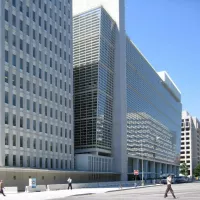
The World Bank is an international financial institution offering loans...
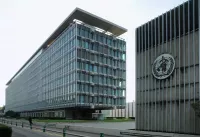
The World Health Organization WHO is a specialized agency of...
France officially the French Republic is primarily located in Western...
Trending
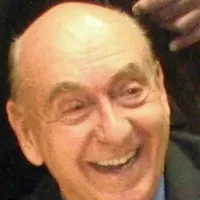
11 days ago Dick Vitale and Charles Barkley Team Up for College Basketball Broadcasts This Season

1 month ago Kim Kardashian's 'All's Fair' TV show faces criticism despite Niecy Nash's defense.
10 days ago Marcus Freeman: Notre Dame coach considered for Giants head coaching vacancy in NFL.
Jeremiyah Love is an American college football running back He currently plays for the Notre Dame Fighting Irish He is...
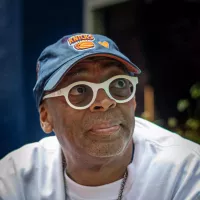
7 months ago Trump's Tariffs Threaten Cannes 2025, SAG-AFTRA Responds, Impacting Spike Lee's Industry.
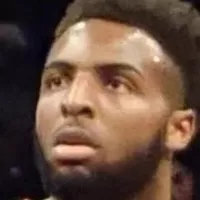
7 months ago Mitchell Robinson's Playoff Impact: Knicks' Gamble Pays Off as Hart Shines in Game 3
Popular

Candace Owens is an American conservative political commentator and author...

Ilhan Omar is an American politician currently serving as the...

XXXTentacion born Jahseh Dwayne Ricardo Onfroy was a controversial yet...

Tom Cotton is an American politician and Army veteran currently...
The Kennedy Center Honors are annual awards recognizing individuals and...
Matt and Ross Duffer known as the Duffer Brothers are...